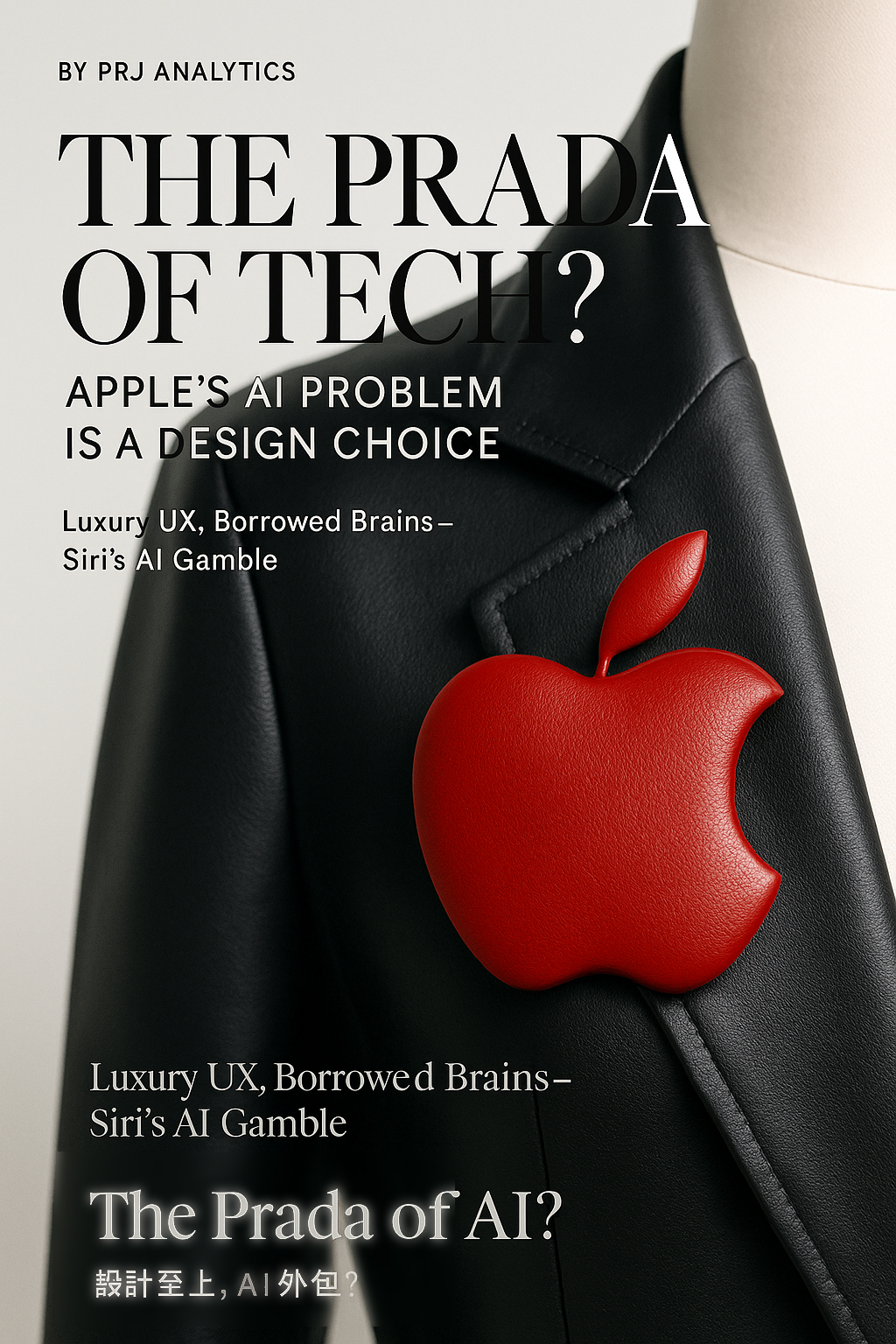
The iPhone 17 Air debate—prices up, features thin—misses the bigger story. Apple’s risk isn’t about one phone cycle; it’s that the company is drifting toward fashion-house positioning (design, finish, privacy, integration) while renting core AI from others. That philosophy delights in handhelds—but it caps what’s possible in the next platform: AI/smart glasses.
While headlines fixate on camera counts and $100 deltas, the underlying constraint is AI capability. If Apple keeps “borrowing” brains (Gemini today, ChatGPT/Claude tomorrow) rather than fielding a first-party foundation model, then the ceiling on iPhone features becomes the ceiling on every Apple surface—Watch, Mac, HomePod, and soon, glasses.
Think of Apple as the Prada of electronics: unmatched industrial design, cohesive UX, and privacy couture. That wins shelves and hearts. But when computing shifts from taps to ambient reasoning, the engine matters as much as the exterior.
Apple is reportedly rebuilding Siri into a full answer/search layer (often described as World Knowledge Answers). The sensible near-term move is an aggregator architecture:
This works because distribution and defaults matter. Most questions start from system entry points, and Apple owns those surfaces.
Apple sits on roughly $65B in cash and world-class talent. Yet we’ve seen rivals push faster at the frontier—xAI stood up in months; Google even brought Sergey Brin back to accelerate Gemini. Apple’s delay isn’t primarily money or people; it’s culture.
Apple’s DNA has long been “perfect or nothing.” That wins in hardware (iPhone, MacBook). AI runs on “ship → iterate → scale.” Tim Cook is a master operator, but not a Steve-style product visionary. Unless Apple acquires that energy—or buys a first-rate model team—the company will likely keep playing catch-up on the model itself while excelling at integration.
Whether it’s the iPhone or AI glasses, everything now centers on AI. If “mobile” becomes head-worn, ambient computing, Apple’s missing foundation model moves from footnote to focal point.
What to expect for Apple’s glasses:
In short: Apple will own the interface on your face; partners will power the heaviest thinking—at least initially.
Apple looks more like the Prada of tech: luxury UX, impeccable integration, and—at least for now—borrowed brains. That can win the interface today, and maybe the face tomorrow. But the strategic question won’t go away: